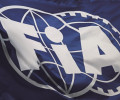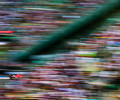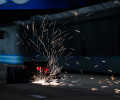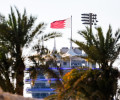F1 - Japanese GP: Preview

PRESS RELEASE
|
2012 JAPANESE GRAND PRIX - 05-07 OCTOBER 2012 |
||
|
After the bright lights of the Singapore Grand Prix and a win for Sebastian Vettel that reignites the defending champion’s challenge for the 2012 drivers’ title, Formula One continues its Far-Eastern trek with a visit to one of the sport’s truly classic circuits – Suzuka in Japan. |
 |
|
|
SUZUKA CIRCUIT Length of lap: 5.807km Lap record: 1:31.540 (Kimi Raikkonen, McLaren, 2005) Start line/finish line offset: 307.471km Changes to the circuit since 2011 |
||
|
|
||
 |
||
|
|
||
|
Japanese GP Fast Facts |
||
|
► Pirelli will this weekend bring its Silver-banded Hard tyre and the Yellow-striped Soft compound. Both variants offer pace but more importantly they have the durability needed for what is quite an abrasive track surface. ► Michael Schumacher is without doubt the most successful driver here with a staggering six Japanese Grand Prix wins (1995, ’97, 2000-’02 and 2004) to his credit. His nearest rivals are all stuck on two wins apiece. Double winners include Gerhard Berger, Ayrton Senna, Damon Hill and Mika Hakkinen. From the current grid Fernando Alonso (2006, ’08) and Sebastian Vettel (2009-’10) have also won twice here. |
► The Japanese Grand Prix hasn’t been a particularly happy hunting ground for home-grown drivers, however. Over the course of 27 races, Japanese drivers have scored just 22 points. Satoru Nakajima finished sixth in 1987 and 1989 to bag a total of two points under the scoring rules in effect at the time. Aguri Suzuki became the first Japanese driver on the podium in 1990, taking four points for the third place under the same rules and Kamui Kobayashi grabbed six points under the current scoring rules with seventh place in 2010. Takuma Sato is the country’s most consistently successful racer at this race, finishing fifth in 2002, sixth in 2003 and fourth in 2004 for a total of 10 points. |
► The feud between the pair continued the following year, only this time the collision occurred at turn one. The accident handed the Brazilian his second world title. |
|
|
||
|
Japanese GP Race Stewards Biographies |
||
|
LARS ÖSTERLIND FIA WORLD COUNCIL MEMBER; HONORARY PRESIDENT OF THE SWEDISH AUTOMOBILE SPORT FEDERATION |
 |
|
| Swede Lars Österlind is a highly experienced FIA steward, who has officiated at more than 100 grands prix and a similar number of World Rally Championship rounds. A social sciences graduate and lifelong motor sport enthusiast, Österlind was President of the Swedish Rally Commission from 1978-1982, then President of the Swedish Automobile Sport Federation from 1982-1996. He became honorary president in 1996 and has been a member of the FIA World Council since 1984. Outside motor sport Österlind has specialised in management, working as a management consultant and pursuing his own business interests. He is also experienced in local government at city council level. | ||
|
|
||
|
VINCENZO SPANO PRESIDENT OF THE SPORTING COMMISSION OF THE AUTOMOBILE AND TOURING CLUB OF VENEZUELA |
 |
|
| Italian-born Vincenzo Spano grew up in Venezuela, where he went on to study at the Universidad Central de Venezuela, becoming an attorney-at-law. Spano has wide-ranging experience in motorsport, from national to international level. He has worked for the Touring y Automóvil Club de Venezuela since 1991, and served as President of the Sporting Commission since 2001. He was president for two terms and now sits as member of the Board of the Nacam-FIA zone. Since 1995 Spano has been a licenced steward and obtained his FIA steward superlicence in 2003.Spano has been involved with the FIA and FIA Institute in various roles since 2001: a member of the World Motor Sport Council, the FIA Committee, and the executive committee of the FIA Institute. | ||
|
|
||
|
DEREK WARWICK |
 |
|
| Derek Warwick makes his second appearance as an FIA driver steward this season here in Japan, having adjudicated at the German GP in July. Warwick raced in 146 grands prix, from 1981 to 1993, for Toleman, Renault, Brabham, Arrows and Lotus. He scored 71 points and achieved four podium finishes, with two fastest laps. He was World Sportscar Champion in 1992, driving for Peugeot. He also won Le Mans in the same year. Warwick raced Jaguar sportscars in 1986 and 1991. Warwick competed in the British Touring Car Championship in 1995, 1997 and 1998, as well as making one more appearance at the Le Mans in 1996, driving for the Courage Competition team. | ||
|
|
||
|
Japanese GP Championship Standings (Drivers) |
||
 |
||
|
|
||
|
Japanese GP Championship Standings (Constructors) |
||
 |
||
|
|
||
|
Japanese GP |
||
|
|
||
|
THURSDAY |
14.00-15.00 |
|
|
|
||
| ADDITIONAL MEDIA OPPORTUNITIES | ||
|
|
||

 Facebook
Facebook Twitter
Twitter





